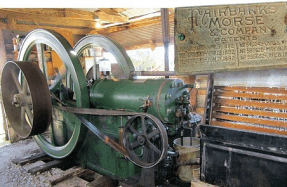
If it were convenient to easily apply a load to an old hit-and-miss engine, one could hear its response going from no load to full load, measure horsepower, or test the old expression of “a pint of fuel per horsepower hour.” Whatever the reason, a simple and inexpensive method is desirable.
In the hot-rod culture, a dynamometer (most often called a dyno) is used to load engines. In principle, a dyno is any machine that loads an engine and records its output in horsepower and torque. Now all horses aren’t the same but James Watt, inventor of the steam engine, defined horsepower as 550-foot-pounds-per-second (550 ft-lb/sec) in order to quantify his engines. Lift 550 pounds a foot in one second or lift one pound 550 feet in one second or any combination of weight, distance and time that results in 550 generates 1hp. For example, if a 180lb man runs up a flight of stairs in 3 seconds and those stairs, no matter how long, rose 10 feet, he would generate (10 X 180)/3 = 600ft-lb per/sec or about 1.1hp.
The physics folks have converted mechanical horsepower to many other measurement methods. In the electrical world, 1hp is also 745 Watts or 0.212 ton in the refrigeration world. For several years the author ran an electrical dyno at shows (see Figure 1). The generator was a discarded treadmill motor and its load was 300 Watt light bulbs. The hit-and-miss engine could quickly run from full load to no load with stops in between, using toggle switches that controlled the number of bulbs turned on. The load in Watts, and thus horsepower, could easily be computed using an Amp-meter and a Volt-meter. Treadmill






